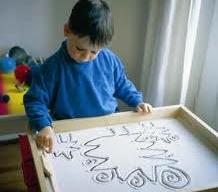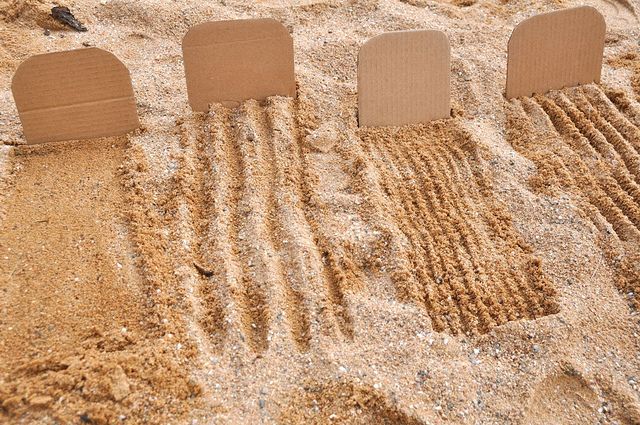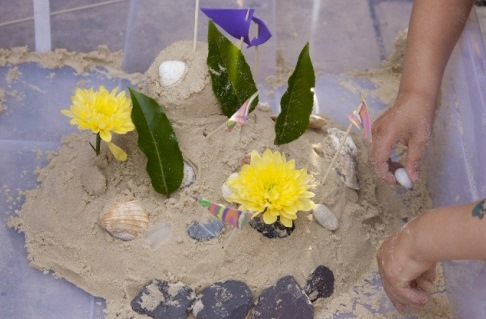
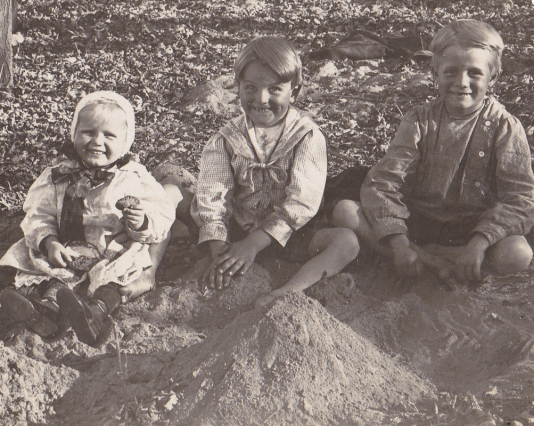 Children have always been intrigued by sand. Sand is a foundational part of the ground in the same way that dirt or clay is, making it available to children for centuries. Before the arrival of the toys and electronics of today’s society, children were forced to find creative methods to play with the outdoor materials found all around them, including sand. Children have played in sand by digging, sifting, building, pouring, and exploring throughout time, and they should be encouraged to continue this method of play. Sand is very well-suited to the urge to explore and to the imagination inherent in young children.
Children have always been intrigued by sand. Sand is a foundational part of the ground in the same way that dirt or clay is, making it available to children for centuries. Before the arrival of the toys and electronics of today’s society, children were forced to find creative methods to play with the outdoor materials found all around them, including sand. Children have played in sand by digging, sifting, building, pouring, and exploring throughout time, and they should be encouraged to continue this method of play. Sand is very well-suited to the urge to explore and to the imagination inherent in young children.
Why Playing with Sand Is Good for Children
Like playing with water, playing in sand is soothing and entertaining for children. Even adults can occasionally be caught running their fingers and toes through sand and enjoying its texture. Although sand is naturally found outdoors and can be played with in sandboxes or on beaches, it can also be brought inside for children to play on the floor or on sand tables. No matter the location of the sand play, these are eight reasons why playing in the sand is good for kids:
1. It Is Open-Ended
Children learn the most when faced with open-ended questions and open-ended tasks, and sand is a medium that is naturally open-ended. No matter the skill or cognitive level of the child, sand is an appropriate play object. Babies and Toddlers can simply sit in sand and take in the texture and qualities of it while older children with more sophisticated thought processes can use sand for exploration and creativity.
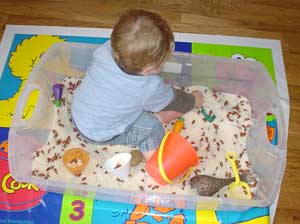
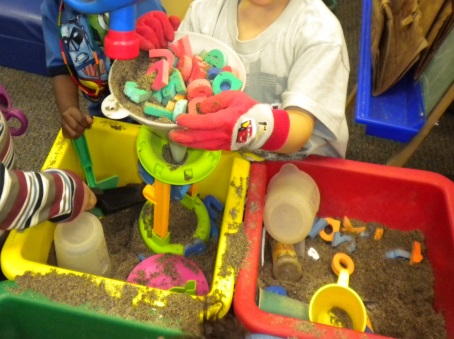
Similarly, there is no right or wrong way to play with sand. It is appropriate to manipulate or experiment with sand in any way that a child wishes. They dig in sand, sift it, build with it, pour it, enjoy the feel and smell of it, pretend with it, and explore how it moves. Children find this concept of never being wrong both comforting and liberating in their play.
 Sand has a variety of qualities to it that make it even more open-ended. When it is dry, sand is easily poured and sifted through the fingers, allowing children to explore its texture and changeability. When water is added to sand, the physical qualities of the sand change immensely. Children can then explore this version of sand as well. The few physical limitations of sand encourage children to experiment with this very open-ended medium.
Sand has a variety of qualities to it that make it even more open-ended. When it is dry, sand is easily poured and sifted through the fingers, allowing children to explore its texture and changeability. When water is added to sand, the physical qualities of the sand change immensely. Children can then explore this version of sand as well. The few physical limitations of sand encourage children to experiment with this very open-ended medium.
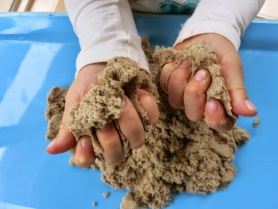
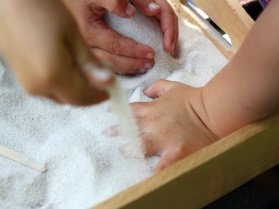
2. It Stretches the Imagination

 As children begin to more fully understand the physical properties of sand, they have the opportunity to expand their creativity and imaginations. The children can make structures and environments using the sand and create small worlds to pretend and role play in. Older children can transport the sand, add water to it, mix it to use for their imaginative play, cook with it and combine it with play in most other areas of play.
As children begin to more fully understand the physical properties of sand, they have the opportunity to expand their creativity and imaginations. The children can make structures and environments using the sand and create small worlds to pretend and role play in. Older children can transport the sand, add water to it, mix it to use for their imaginative play, cook with it and combine it with play in most other areas of play.
Providing a wide variety of common and household objects (see Resouces) for children is a fantastic way for them to extend their imaginative and role play. Exchange these objects for new ones frequently, and watch as children adapt their creations and become inspired to construct new ones. Many children find working with sand to be relaxing and non-threatening, allowing them the freedom to express their imaginations in safety and without consequence.
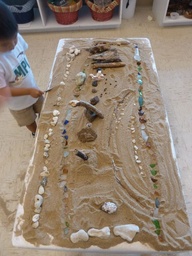
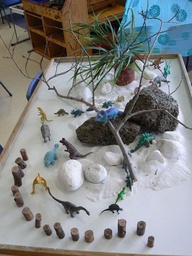
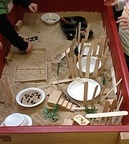

3. It Promotes Physical Development
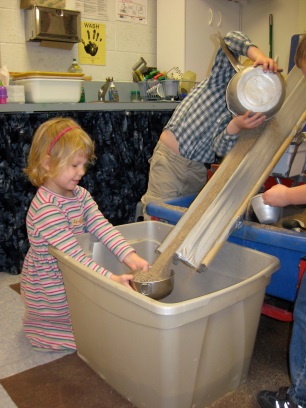 Gross Motor Skills - Muscle skills in the arms and upper bodies of children will be further developed through sand play. By digging, pouring, sifting, and scooping sand, children use their upper bodies and arms in ways that many of their other toys do not require them to work. Large am ounts of sand can become very heavy and difficult to move, thereby creating further exercise and muscle-building opportunities for young children. If the sand becomes wet, it becomes even more difficult to scoop and manipulate, further flexing the young muscles of children playing in the sand. The legs and lower bodies of children get involved from squatting in the sand or from lifting and carrying buckets of sand to other areas.
Gross Motor Skills - Muscle skills in the arms and upper bodies of children will be further developed through sand play. By digging, pouring, sifting, and scooping sand, children use their upper bodies and arms in ways that many of their other toys do not require them to work. Large am ounts of sand can become very heavy and difficult to move, thereby creating further exercise and muscle-building opportunities for young children. If the sand becomes wet, it becomes even more difficult to scoop and manipulate, further flexing the young muscles of children playing in the sand. The legs and lower bodies of children get involved from squatting in the sand or from lifting and carrying buckets of sand to other areas.

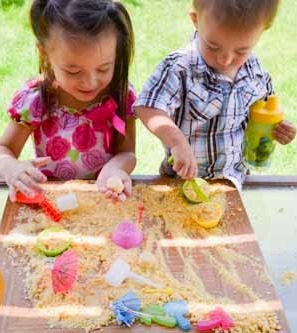
Fine Motor Skills - Additionally, hand-eye coordination and small muscle control is improved through small movements as children work with sand accessories such as scoops and small shovels. Most children will not notice the physical involvement of sand play because they are too focused on their play and the task at hand.
4. It Encourages Social Skills
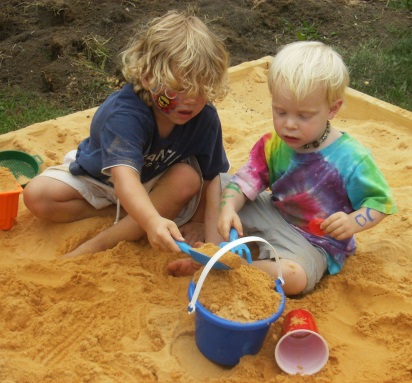
 When children play together in the same sandbox or at a sand table, they are often faced with problems involving sharing tools, negotiating for play space, and compromising about what should be or will be built in the sand. Although each child may have a separate play space, many of them will engage in pretend play as they combine to "cook" with the sand or construct roadways, dig tunnels, and build towers for a small city. By working together in a shared play space, children learn empathy and how to recognise and understand the perspectives of the other children while working together and sharing sand tools.
When children play together in the same sandbox or at a sand table, they are often faced with problems involving sharing tools, negotiating for play space, and compromising about what should be or will be built in the sand. Although each child may have a separate play space, many of them will engage in pretend play as they combine to "cook" with the sand or construct roadways, dig tunnels, and build towers for a small city. By working together in a shared play space, children learn empathy and how to recognise and understand the perspectives of the other children while working together and sharing sand tools.
5. It Promotes Cognitive Development
Children learn about the natural physical properties of sand by playing with it and by comparing wet and dry sand. While playing in sand, 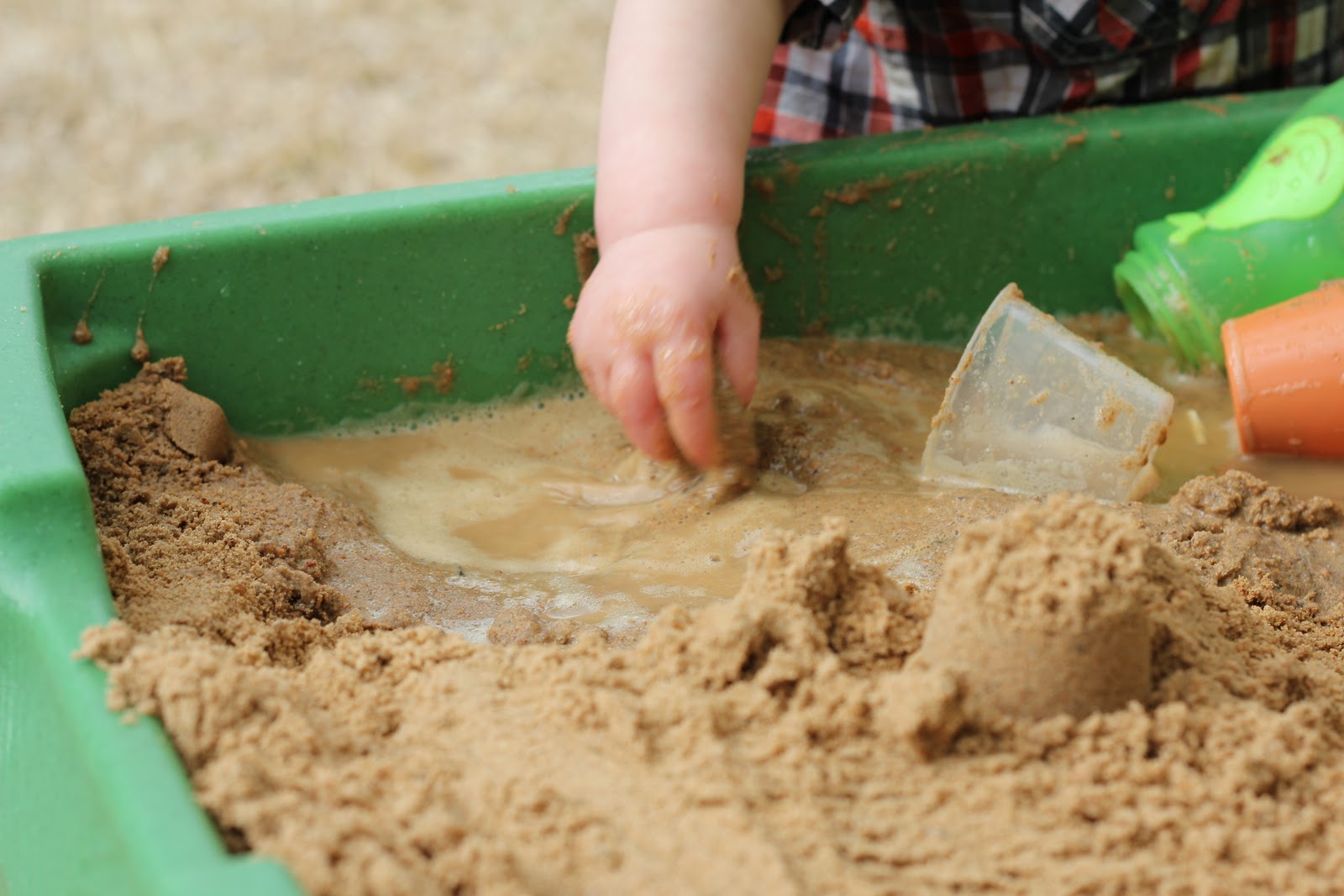 children will learn to problem-solve as they try to figure out how to prevent their towers from continually falling over or their moats from collapsing in on themselves. They will discover cause and effect from learning what happens when water is added to the sand. Finally, children will learn more vocabulary words (see list) that fit specifically to sand play as well as from chatting with other children in the sand play area.
children will learn to problem-solve as they try to figure out how to prevent their towers from continually falling over or their moats from collapsing in on themselves. They will discover cause and effect from learning what happens when water is added to the sand. Finally, children will learn more vocabulary words (see list) that fit specifically to sand play as well as from chatting with other children in the sand play area.
6. It Teaches Mathematical Concepts
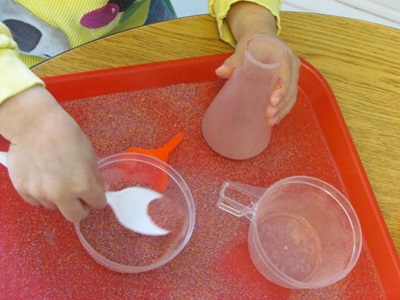 Using containers of varying sizes and shapes helps to teach children about ideas such as "more than," "less than," and "equal." Through trial and error, these children will be able to make predictions about which containers will hold more or less sand. Providing measuring spoons or cups could help children learn more specific measures as well as other mathematical terms such as "empty" and "full" or "heavy" and "light." Over time, and with maturity, children can learn how many scoops of different sizes it takes to fill a container, an early precursor to learning teaspoons, tablespoons, and cups.
Using containers of varying sizes and shapes helps to teach children about ideas such as "more than," "less than," and "equal." Through trial and error, these children will be able to make predictions about which containers will hold more or less sand. Providing measuring spoons or cups could help children learn more specific measures as well as other mathematical terms such as "empty" and "full" or "heavy" and "light." Over time, and with maturity, children can learn how many scoops of different sizes it takes to fill a container, an early precursor to learning teaspoons, tablespoons, and cups.
7. It Encourages Scientific Experiments
 Bury metal treasures for children and provide magnets. Children will learn about magnetic force while going on a treasure hunt. Set up a rope and pulley system for children to move buckets of sand up to a table or across a sandbox to teach about levers and pulleys. Punch holes of varying sizes in plastic bottles for children, and watch as they discover the differences in hole sizes. Provide other objects for children to construct their own scientific experiments such as funnels, ramps, and rolling pins. Observe as the children make their own experiments to discover information not only about sand but also about basic scientific principles.
Bury metal treasures for children and provide magnets. Children will learn about magnetic force while going on a treasure hunt. Set up a rope and pulley system for children to move buckets of sand up to a table or across a sandbox to teach about levers and pulleys. Punch holes of varying sizes in plastic bottles for children, and watch as they discover the differences in hole sizes. Provide other objects for children to construct their own scientific experiments such as funnels, ramps, and rolling pins. Observe as the children make their own experiments to discover information not only about sand but also about basic scientific principles.
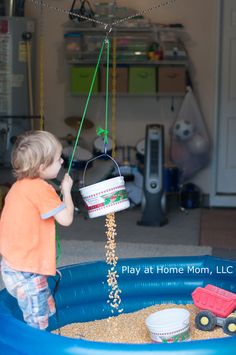
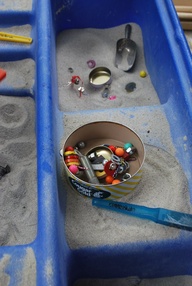
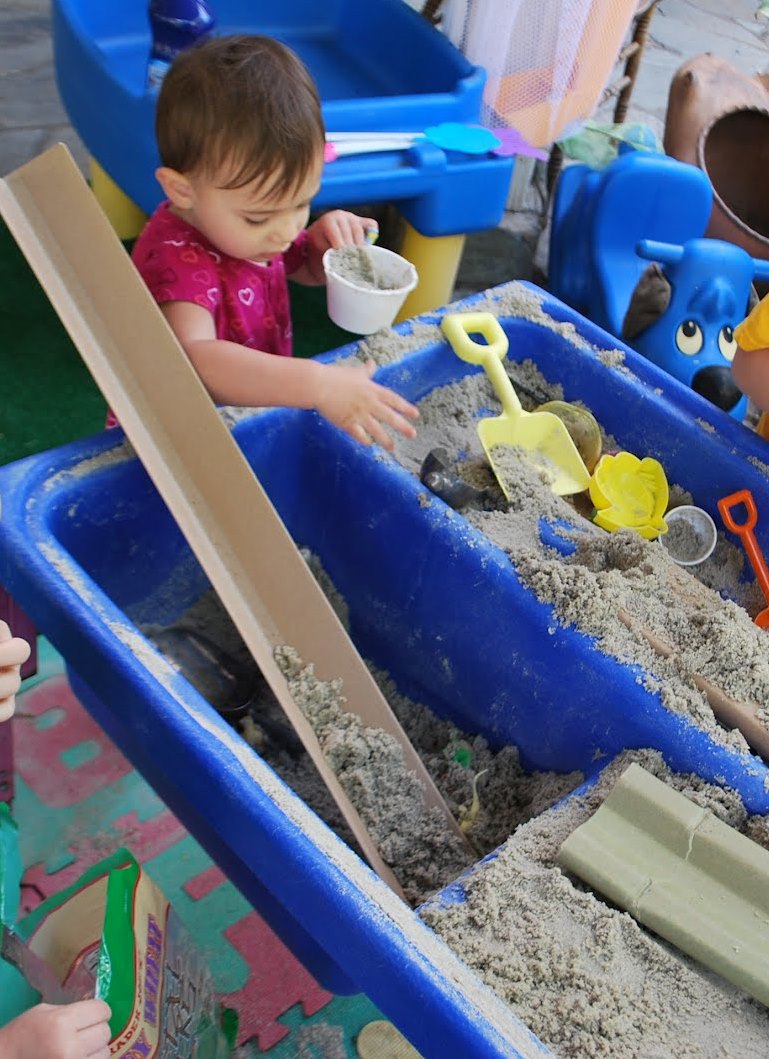
8. It Incorporates Artistic Expression
Encourage children to draw pictures in the sand, develop elaborate sand castles, and create interesting moulds from household objects in addition to buckets. As children experiment with the properties of sand and create their own buildings and towns, they can decorate the objects with stones, leaves, and flowers that they find in nature. Provide sand combs and discuss different patterns and designs with children as they draw in the sand.
